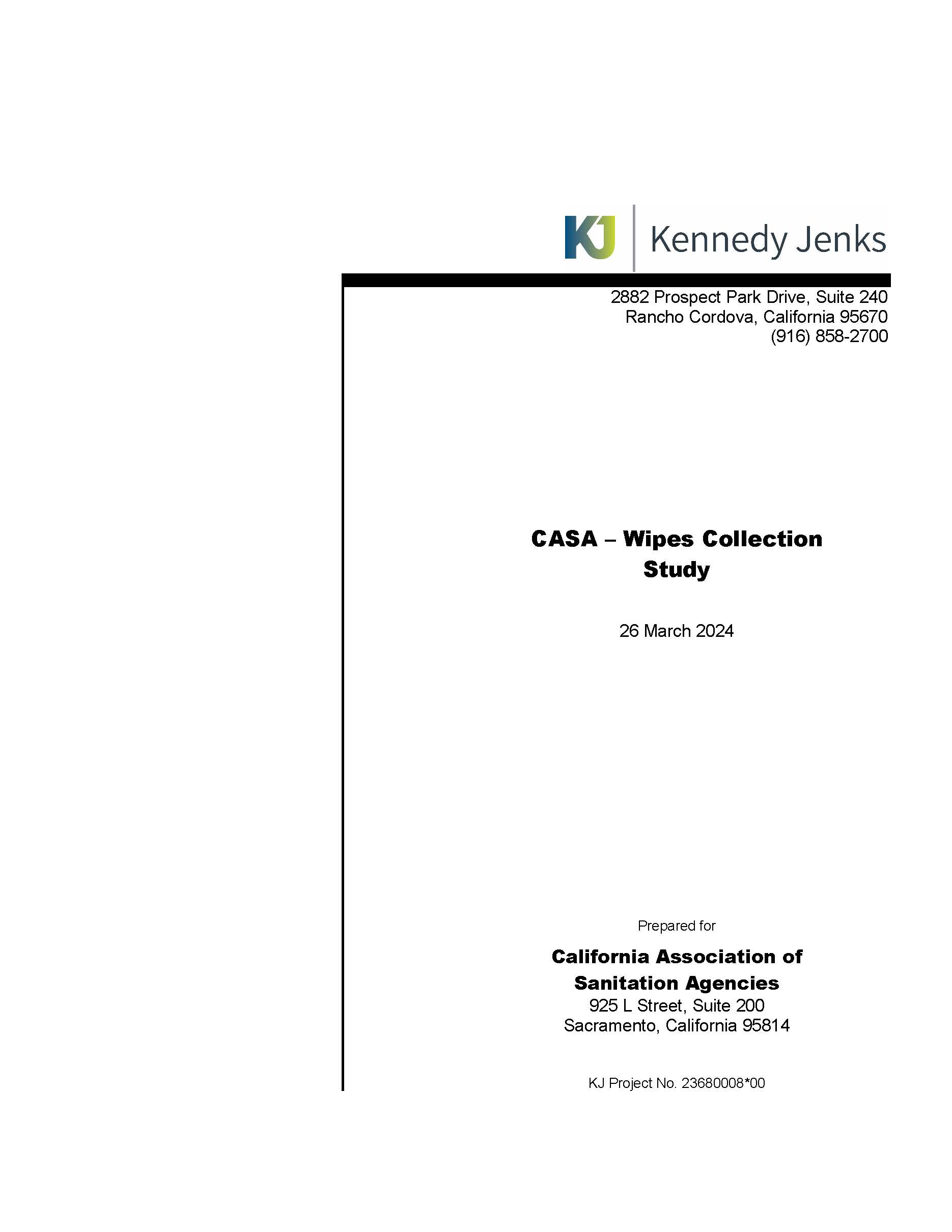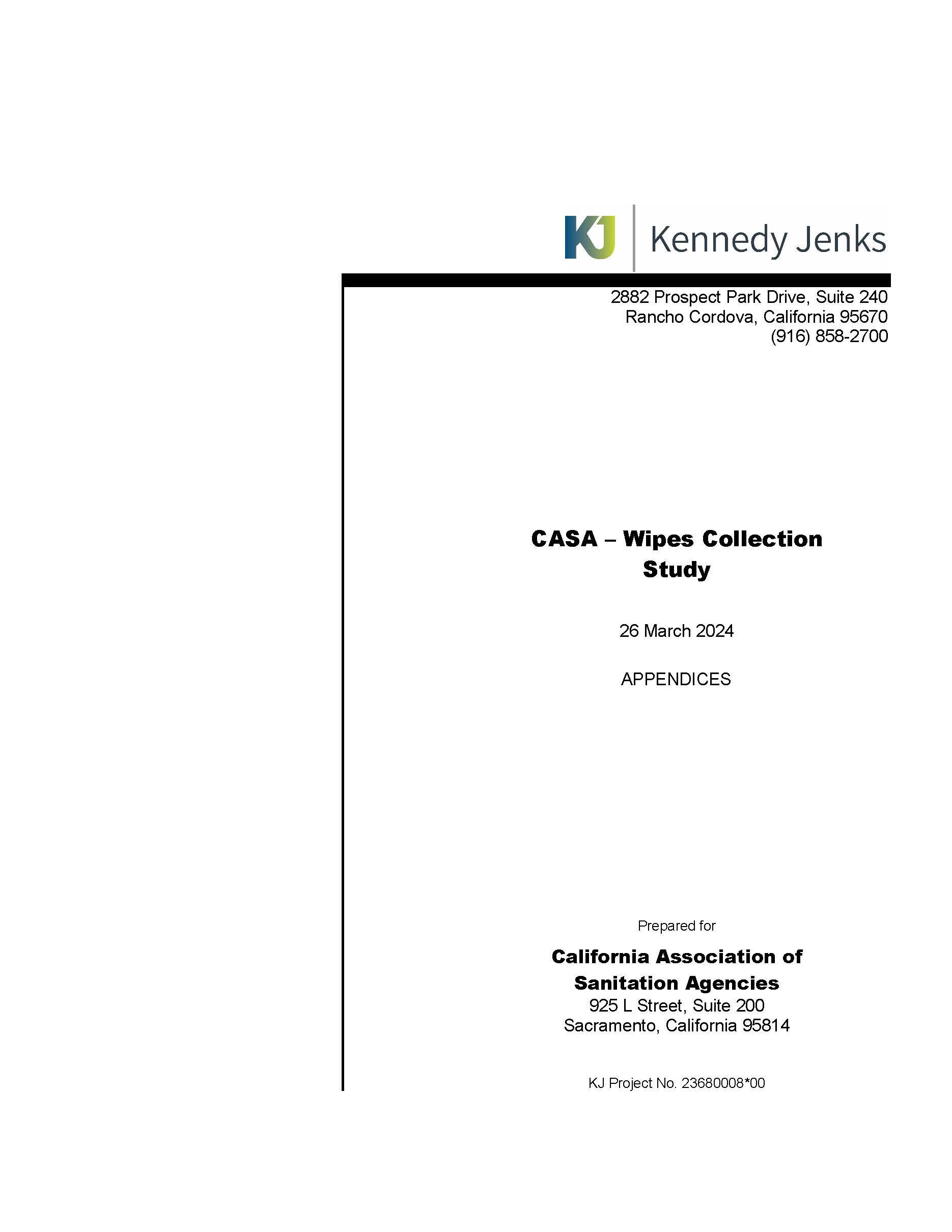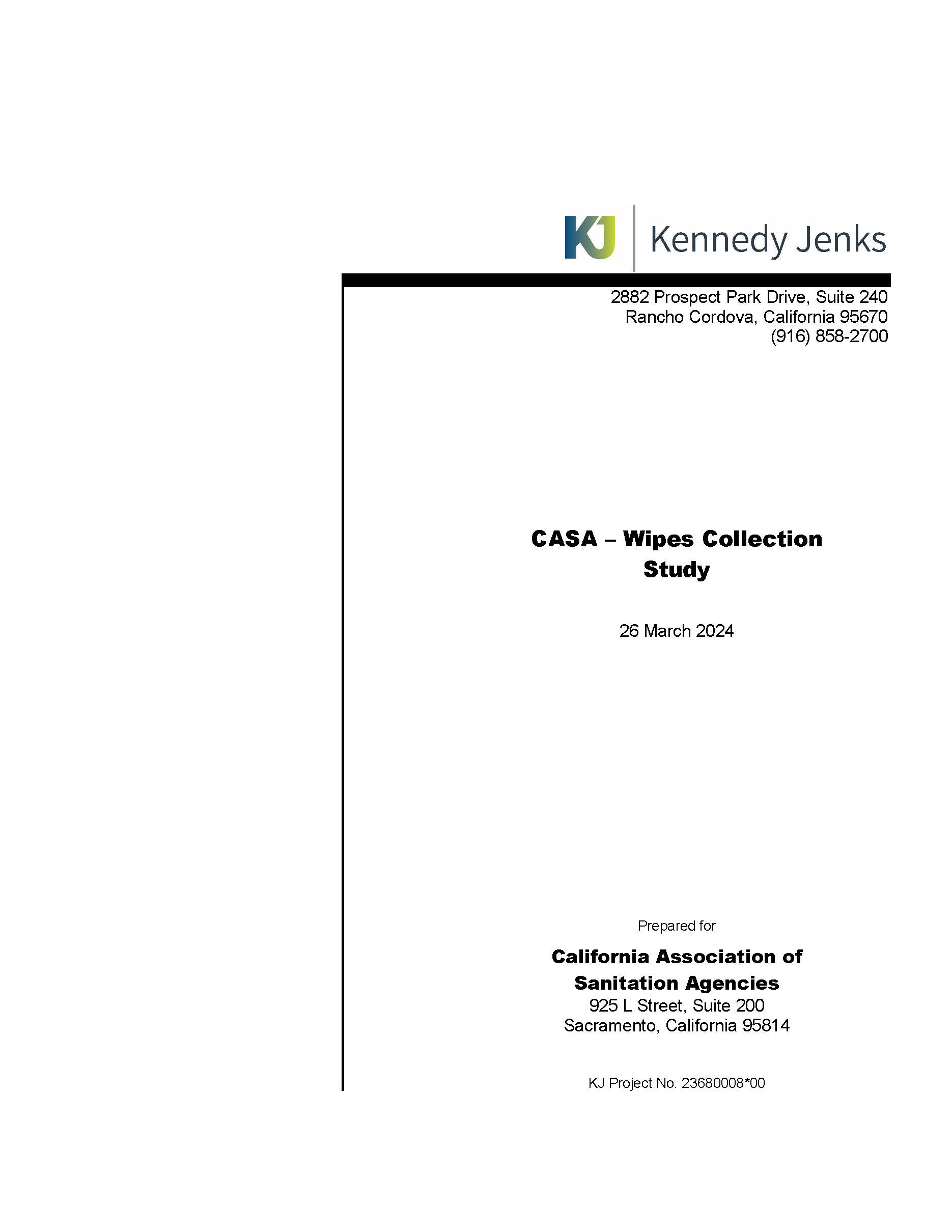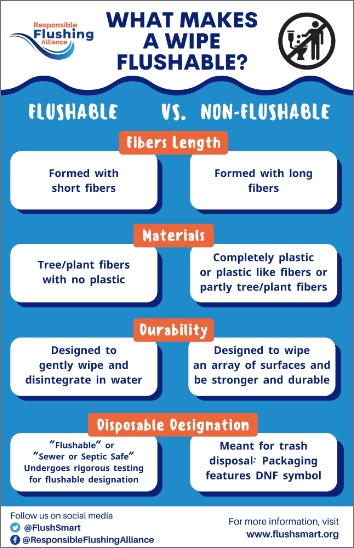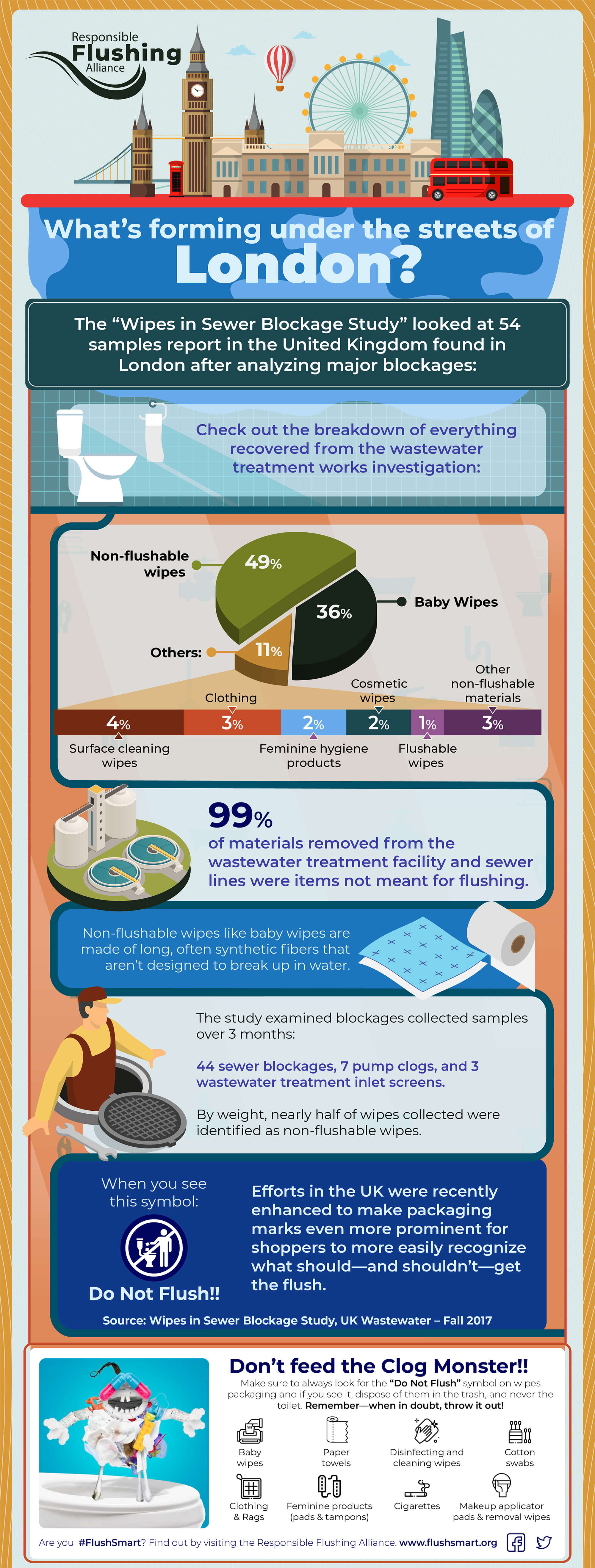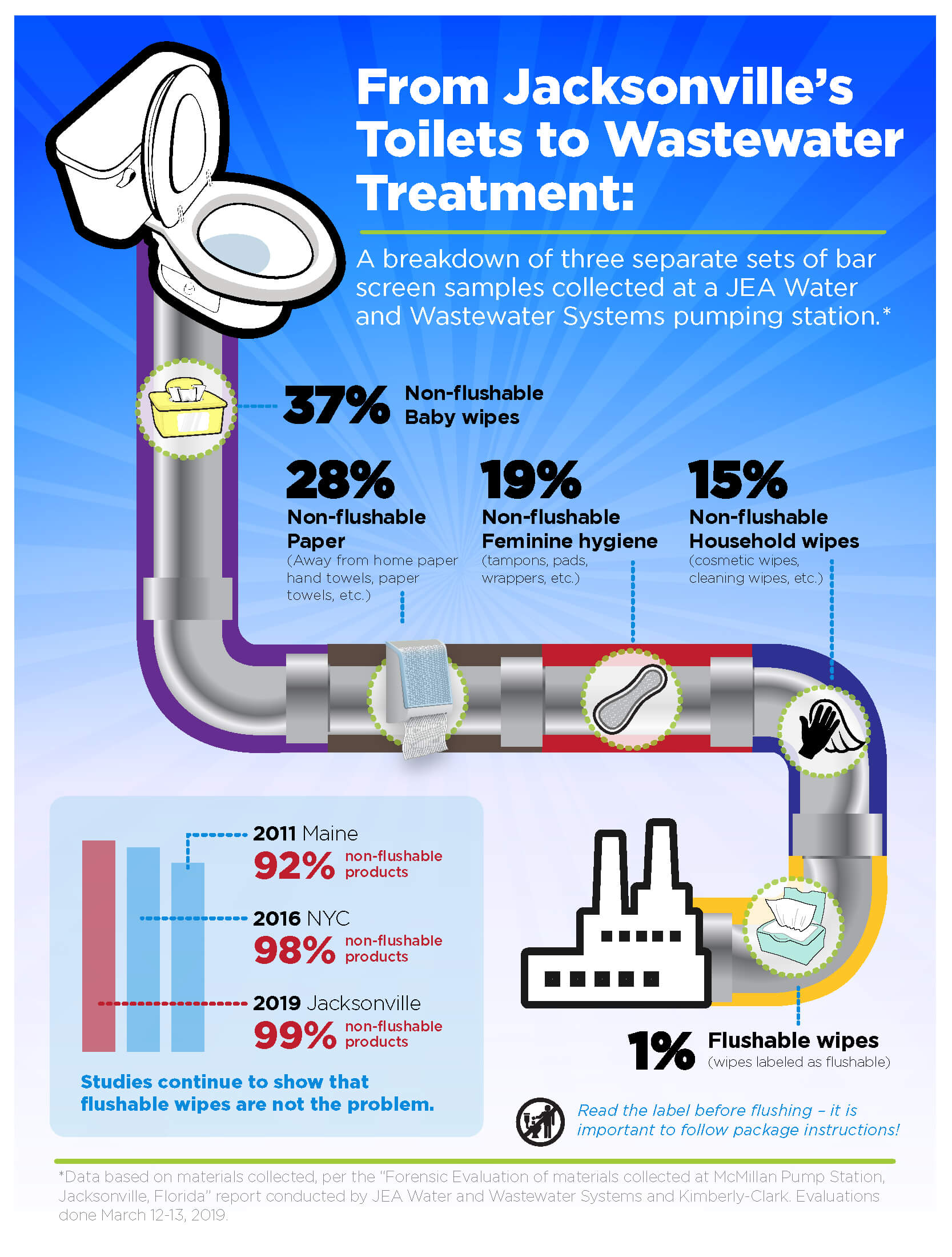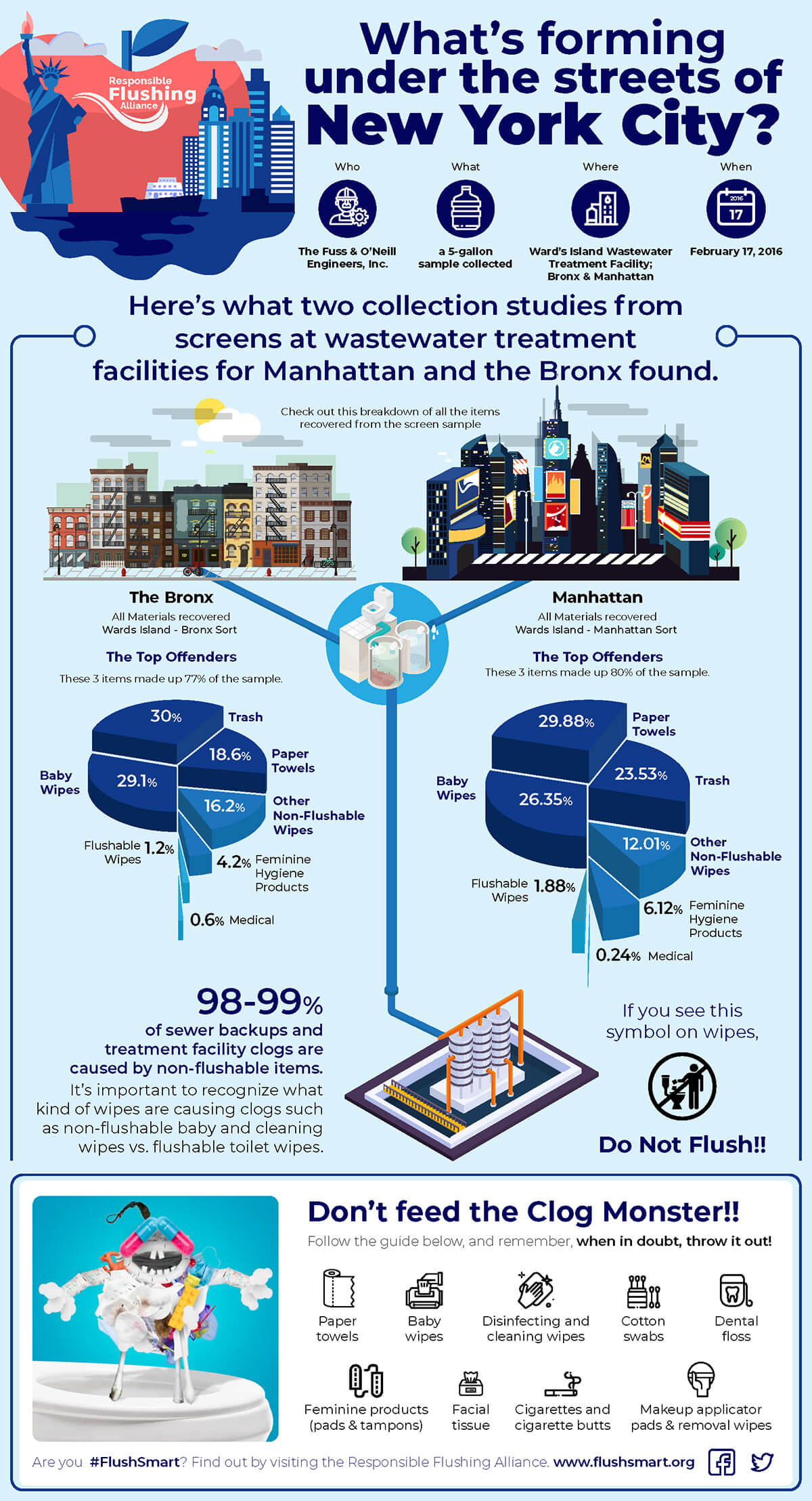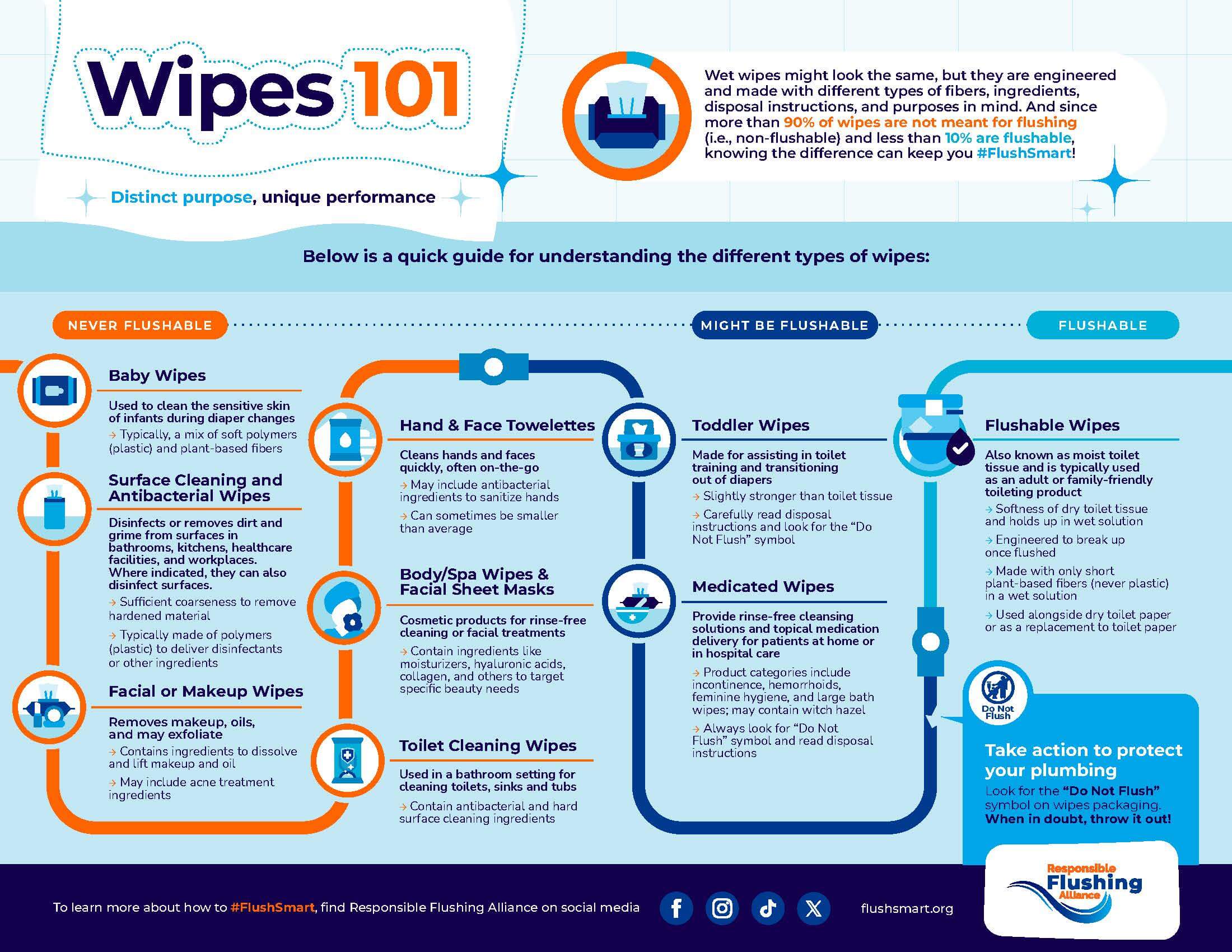Fact Vs. Myth
Here are some common myths and facts about wipes, sewer clogs, in our city pipes and water waste treatment facilities, and other sewage news. Put on your lab coat to see if you know the science behind the facts or how to debunk the myths below.
Fatbergs aren’t a big deal, especially not for my town.
myth!
Luckily, not very much (less than 1,000 gallons) raw sewage is dumped into American waterways each year.
myth!
The name fatberg is a combination of fat + iceberg.
correct!
Anything that can make it through the toilet is okay to flush because it fits.
myth!
The biggest culprit of sewer clogs are flushable wipes.
myth!
Want to test your #FlushSmart skills?
What’s Clogging the Pipes? The Largest Sewage Collection Study Has the Answers
In accordance with California’s Proper Labeling of Wet Wipes law (AB 818), state wastewater agencies and industry experts went deep to find out exactly what is passing through—and clogging up—municipal wastewater systems. The Responsible Flushing Alliance (RFA) alongside the California Association of Sanitation Agencies (CASA) and the Association of the Nonwoven Fabrics Industry (INDA) released the results from the largest known domestic sewage collection study conducted to reveal what’s really being flushed down the drain – and shouldn’t be. Collection and material investigation took place in October 2023 at two locations: Inland Empire Utilities Agency (IEUA) in Southern California and Central Contra Costa Sanitary District (Central San) in the greater San Francisco Bay Area in Northern California. Wastewater and wipes experts collected, sorted and identified more than 1,700 items pulled from the two locations during peak flow times. Kennedy Jenks, an independent engineering firm, designed the study and compiled the findings into the report. The breakdown of items collected from pipes at the two study locations included:
- • 34.1% wipes labeled with the “Do Not Flush” symbol (baby wipes, cleaning wipes, makeup wipes, etc.)
- • 64.9% other non-flushable items (paper towels, period products, trash, etc.)
- • 0.9% wipes labeled as flushable
Below you’ll find the reports, finalized on March 26, 2024.
